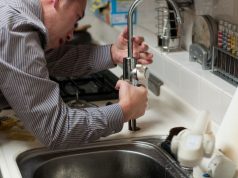
Aluminum foil is a kitchen staple, serving multiple purposes, from preserving the freshness of leftovers to wrapping up a baked potato. Yet, regarding using aluminum foil in the microwave, questions about safety and potential hazards arise. Is it safe to microwave aluminum foil, and if so, for how long? This comprehensive guide sheds light on the science behind microwaves and aluminum foil, the risks involved, safe usage practices, and the truth behind common misconceptions. By the end of this article, you’ll have a clear understanding of how to navigate the world of aluminum foil in the microwave, ensuring both convenience and safety in your kitchen endeavors.
How Long Can Aluminum Foil Be In The Microwave?
The duration for which aluminum foil can be safely used in the microwave depends on a few key factors. First and foremost, it’s crucial to use microwave-safe aluminum foil, if available. You can use it for quick tasks like shielding certain parts of your food for 1-2 minutes. However, prolonged exposure can lead to sparking or fire, so it’s best to exercise caution and follow specific guidelines. Always avoid sharp edges, keep the foil away from the sides of the microwave, and never use it for cooking. Monitoring your microwave while using aluminum foil is essential to prevent any potential hazards.
The Science Behind Microwaves And Aluminum Foil
The interaction between microwaves and aluminum foil is a fascinating aspect of microwave science. To understand it better, we need to delve into the science behind microwaves and the unique properties of aluminum foil:
Microwave Basics:
Microwaves are a form of electromagnetic radiation, similar to radio waves but with a much higher frequency. When you place food in a microwave oven and turn it on, it emits microwave radiation, which consists of oscillating electric and magnetic fields. These fields interact with the molecules in your food, causing them to vibrate, generate heat, and cook the food.
Aluminum’s Conductivity:
Aluminum foil is an excellent conductor of electricity, and it can conduct heat exceptionally well. When microwaves are emitted, they induce electrical currents in the metal surface of the foil. These currents flow rapidly through the foil due to its conductivity.
Reflection And Absorption:
The behavior of aluminum foil in a microwave depends on its thickness and the shape of the foil. Thin pieces of foil, particularly those with no sharp edges, may not absorb microwaves efficiently, and they can act as reflectors. Microwaves may bounce off the foil, potentially causing arcing (sparking) when they hit another part of the microwave oven, such as the walls.
Arcing And Sparking:
When microwaves are reflected or trapped between layers of foil, they can create high-voltage electrical discharges known as arcing. This arcing can be visually striking and is a sign of potential danger as it may damage the microwave and cause fires.
Safety Concerns:
The potential risks of using aluminum foil in the microwave arise from these interactions. Arcing and sparking can lead to fires and damage the microwave’s interior. Moreover, there have been concerns about aluminum leaching into food during microwaving, although this is a subject of ongoing debate among experts.
The Risks Of Using Aluminum Foil In The Microwave
Using aluminum foil in the microwave can pose several risks, ranging from fire hazards to potential health concerns. It’s essential to be aware of these risks to ensure the safe use of aluminum foil in your microwave:
Fire Hazard: One of the most significant risks associated with aluminum foil in the microwave is the potential for fires. When aluminum foil comes into contact with the metal walls or components inside the microwave, it can cause sparks and arcing. These sparks can ignite flammable materials, such as paper towels or food particles, leading to a fire.
Arcing And Sparking: Aluminum foil is an excellent conductor of electricity. When microwaves interact with it, they induce electrical currents in the foil. If the foil is creased, folded, or has sharp edges, these electrical currents can accumulate and lead to arcing or sparking. Arcing can not only damage the microwave but also create a fire risk.
Damage To The Microwave: Repeated use of aluminum foil in the microwave, especially if it causes arcing, can damage the microwave’s interior, including the walls, ceiling, and magnetron (the microwave’s main component for generating microwaves). This damage can compromise the microwave’s functionality and safety.
Potential Health Risks: While there is ongoing debate and research regarding the health risks of using aluminum foil in the microwave, some concerns have been raised about the possibility of aluminum leaching into food during microwaving. High levels of aluminum intake have been associated with health issues such as Alzheimer’s disease, so it’s advisable to exercise caution.
Inconsistent Heating: Aluminum foil can disrupt the even distribution of microwaves in the oven, leading to uneven food heating. This can result in hot spots and cold spots, potentially affecting the quality of the cooked or reheated food.
How To Properly Wrap Food Items With Aluminum Foil?
Properly wrapping food items with aluminum foil is essential to ensure even cooking or heating while minimizing the risks associated with using foil in the microwave or oven. Here are some steps to follow when wrapping food items with aluminum foil:
Use aluminum foil labeled as microwave-safe or oven-safe, depending on your cooking method. Not all foil is suitable for use in both microwaves and conventional ovens, so make sure you select the appropriate type.
Tear off a piece of aluminum foil large enough to enclose the food item you want to wrap completely. The size of the foil will depend on the size of the food item and how much coverage it requires.
Gently bring the sides of the foil up and over the food, creating a tent-like or pouch-like structure. Leave some space between the foil and the food to allow for heat circulation. Avoid tightly sealing the foil, leading to steam buildup and uneven cooking.
Fold and crimp the ends of the foil to seal the package. Again, avoid making the seal too tight. Leave a bit of space for steam to escape during cooking. If you’re wrapping something with liquids, be extra cautious to prevent leakage.
If you’re using foil to cook or reheat food, follow the specific cooking instructions for your recipe. This may include adjusting cooking times and temperatures to accommodate the foil-wrapped food.
Keep an eye on the food as it cooks or reheats. If you notice any signs of arcing or sparking, immediately stop the microwave or oven and carefully inspect the foil. Adjust as needed to prevent further issues.
Safe Uses Of Aluminum Foil In The Microwave
Using aluminum foil in the microwave can be safe if you follow specific guidelines and practices. Here are some safe uses of aluminum foil in the microwave:
- Ensure that the aluminum foil you use is labeled as “microwave-safe.” These foils are specifically designed for microwave ovens and are less likely to cause arcing or sparking.
- Aluminum foil can shield or cover certain parts of food to prevent overcooking or excessive browning. For example, you can loosely cover the edges of a casserole dish or the tips of chicken wings with foil to protect them from becoming too crispy.
- You can use aluminum foil to wrap baked potatoes before microwaving them. Pierce the potatoes with a fork, wrap them in foil, and then microwave. This method helps cook the potatoes evenly and prevents them from drying out.
- To reheat bread, rolls, or pastries in the microwave without making them soggy, you can wrap them in a loose aluminum foil pouch. This method helps retain their texture.
- When steaming vegetables in the microwave, you can create a small aluminum foil packet to hold the vegetables and a bit of water. The foil packet helps steam the vegetables evenly.
- For foods with varying thicknesses, like a slice of lasagna, you can use aluminum foil to cover the thinner parts while reheating. This prevents the thinner portions from overcooking.
Warping Up
Wrapping up, it’s essential to understand that while aluminum foil can be used safely in the microwave for specific purposes, such as shielding and covering, there are potential risks associated with its use, including fire hazards and damage to your microwave. To ensure safety, use microwave-safe aluminum foil, avoid sharp edges and crinkles, and monitor the microwave while using foil. When in doubt, consult your microwave’s user manual or the manufacturer’s guidelines for specific recommendations. By following these precautions, you can harness the convenience of aluminum foil while keeping your kitchen and appliances safe.
FAQ’s
Are There Any Health Concerns Associated With Using Aluminum Foil In The Microwave?
There have been concerns about aluminum leaching into food when using foil in the microwave, but the extent of this risk is debated. To be cautious, avoid prolonged contact with acidic or salty foods with aluminum foil.
How Do I Wrap Food With Aluminum Foil In The Microwave Safely?
When wrapping food with aluminum foil, ensure it is not crinkled or folded with sharp edges. Leave some space between the foil and the food to allow for heat circulation and steam release.
Why Does Aluminum Foil Spark Or Arc In The Microwave?
Aluminum foil can spark or arc in the microwave due to its conductivity. When microwaves interact with foil, they induce electrical currents, especially if the foil has sharp edges or is crinkled.




















